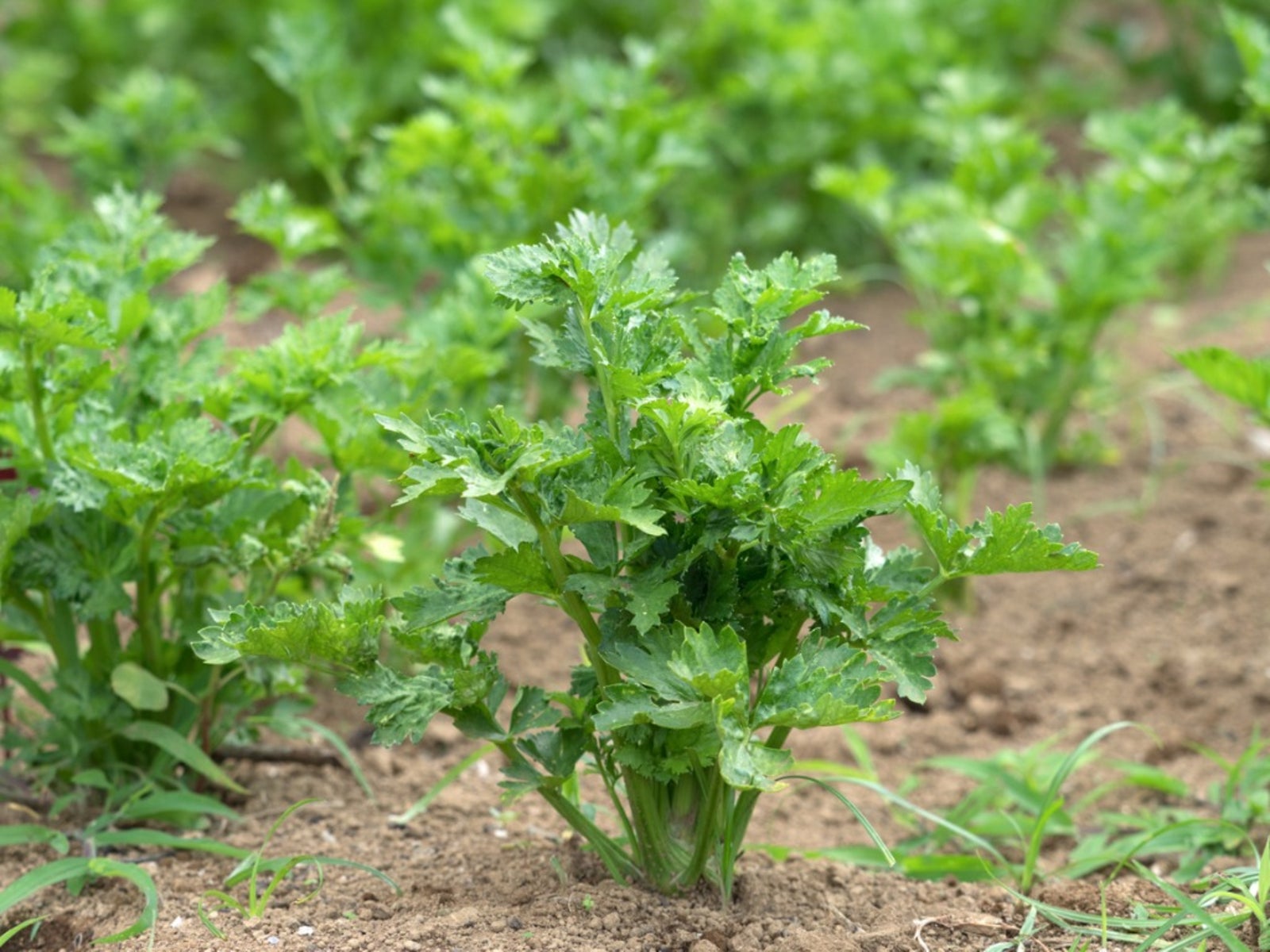
A common snack among dieters, stuffed with peanut butter in school lunches, and a nutritious garnish plunked in Bloody Mary drinks, celery is one of the most popular vegetables in the United States. This biennial veggie can be grown easily in most home gardens, but is susceptible to issues such as celery blackheart disorder. What is celery blackheart disorder and is blackheart in celery treatable?
What is Blackheart Disorder?
Celery is a member of the family Umbelliferae amongst whose other members are carrots, fennel, parsley, and dill. It is most often grown for its crunchy, slightly salty stalks, but celery roots and leaves are also used in food preparation. Celery grows best in fertile, well-draining soil with plenty of organic matter. With a small root system, celery is an inefficient nutrient forager, so additional organic matter is essential. This inability to efficiently absorb nutrients is the cause of celery blackheart disorder, the result of a calcium deficiency in celery. Calcium absorption is essential for cell development. Celery blackheart deficiency presents itself as discoloration of the tender young leaves at the center of the plant. These affected leaves turn black and die. Blackheart is also common in other veggies such as:
It is known as tip burn when found among these veggies, and as the name suggests, manifests itself as light to dark brown lesions and necrosis along the edges and tips of new leaves developing on the interior of the vegetable. This calcium deficiency in celery is found during July and August when environmental conditions are most optimal and plant growth is at its peak. Calcium deficiencies are not necessarily related to soil calcium levels. They may simply be the byproduct of conditions that favor rapid growth such as warm temps and high fertilization.
How to Treat Celery Blackheart Deficiency
To combat blackheart in celery, prior to planting, work in 2 to 4 inches (5-10 cm.) of well-rotted manure, organic compost, and a complete fertilizer (16-16-8) at a rate of 2 pounds (1 kg.) per 100 square feet (9.29 sq. m.). Dig the mixture into the garden soil down to a depth of 6 to 8 inches (15-20 cm.). Good irrigation is also essential to thriving celery plants. Consistent irrigation prevents stress on the plants and allows the inferior nutrient absorbing root system to better increase its calcium intake. Celery needs at least 1 to 2 inches (2.5-5 cm.) of water, either from irrigation or rainfall, each week during the growing season. Water stress will also cause the celery stalks to become stringy. Regular watering will promote crisp, tender stalks. A drip irrigation system is one of the most efficient methods of watering celery crops. In addition to the initial fertilizer applied at planting, celery will benefit from additional fertilizer. Apply a side dressing of a complete fertilizer at a rate of 2 pounds (1 kg.) per 100 square feet (9.29 sq. m.).
Sign up for the Gardening Know How newsletter today and receive a free copy of our e-book "How to Grow Delicious Tomatoes".

Amy Grant has been gardening for 30 years and writing for 15. A professional chef and caterer, Amy's area of expertise is culinary gardening.
